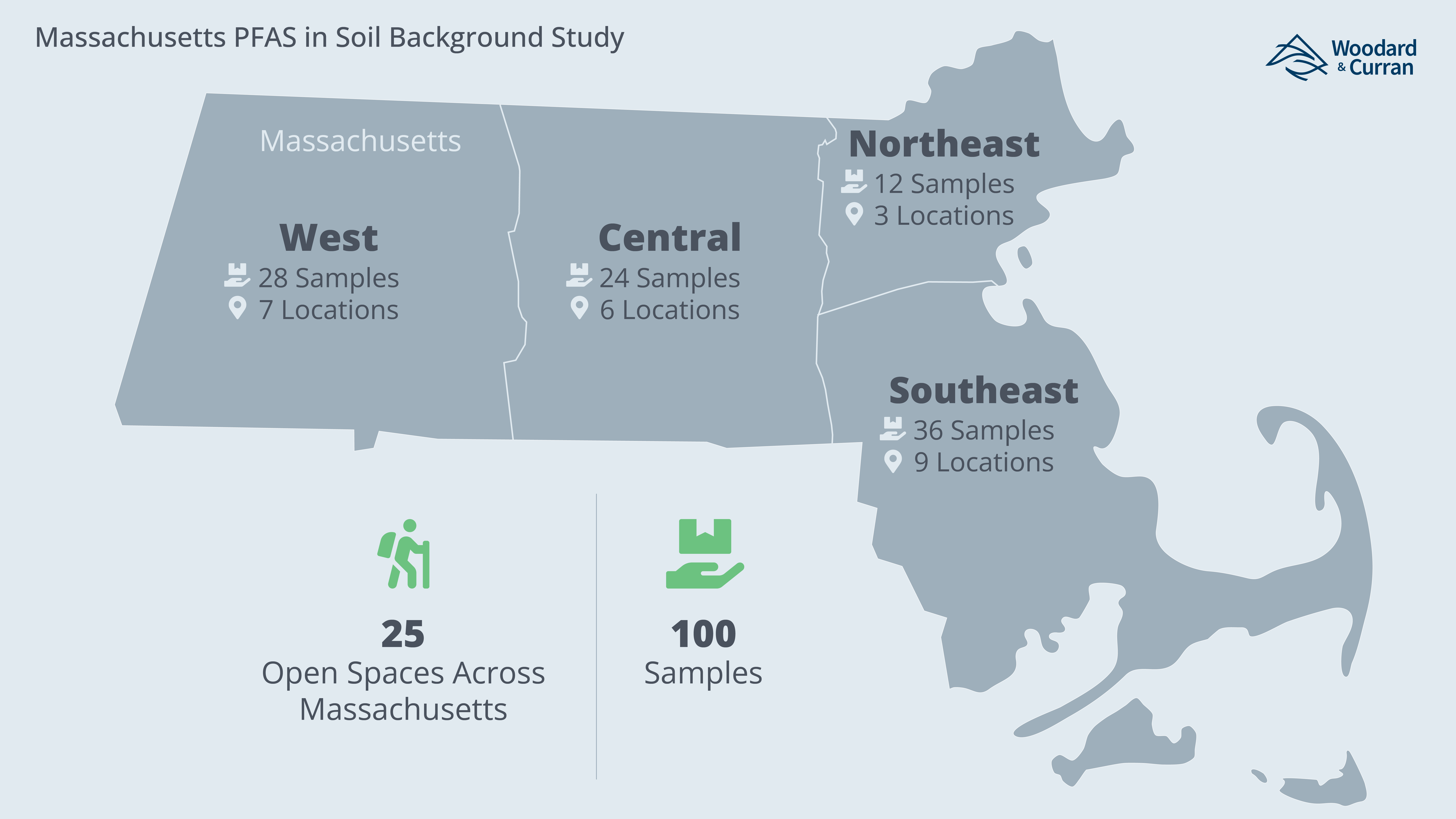Putting contamination into context
Understanding background concentrations of contaminants in the environment allows us to more effectively determine whether a regulated release to the environment has occurred. When it has, this important contextual information helps us to more accurately assess the nature, extent, and associated risks associated with release-related constituents.
Regulatory limits for PFAS in soil and groundwater are among the most stringent ever promulgated in Massachusetts and other states throughout the U.S. However, background levels of PFAS are not well understood. In addition to broadening our understanding of the levels and distribution of PFAS in Massachusetts soils and elsewhere, the results of this study may be considered as part of a reassessment of soil standards in the Bay State.
Distributed, double-blind data collection

Designed to quantify typical background levels of 36 PFAS in soils and identify regional trends, the study involved collection of 100 surface soil samples from 25 undeveloped properties across the state. We intentionally selected and solicited landowner permission for testing locations that were not in proximity to known PFAS releases or potential source locations.
